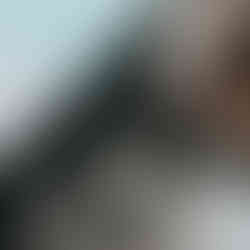Dishwasher Tips
- Gizmo Appliance Repair

- Oct 31, 2023
- 2 min read
No other household appliance is as controversial as the humble dishwasher. How many fights have you gotten into over the best way to load the dishwasher? Or whose turn it is to empty it? Or who put the dirty fork in with all the clean ones?
To get the most out of using a dishwasher, try out using some of the following tips:
Don't run it when is half full – Don’t run a half-full load; this will cost you more water (water amount is predetermine and energy, so always wait until you have enough for a full load before running a cycle.
Don’t overload it. - At the same time, a dishwasher can be TOO full. If you put too many dishes in there, some items may block water from flowing to others nearby. Load up the racks so that everything has a space and that nothing clangs together when you give the racks a little shake test.
Use less dishwasher detergent. No, even less than that - Most of us use too much dishwasher detergent. Way too much. And not only does it cost us money, but too much detergent can also scratch our dishes or make glasses come out cloudy. Whether you’re using liquid, powder, or even pods, you need way less than the package recommends.
Pods are the way to go! – Pods have been tried and tested for optimal results which leave fewer water spots and film compared to powder or liquid detergents.
Load plates so that they face the center - The sprayer arm works from the middle out, so you want to load plates — and cutting boards, sheet pans, etc! — facing the middle of the dishwasher. This way, they’re sure to get the proper spray treatment they need.
Don’t have your washer and refrigerator beside one another – Dishwashers produce a lot of heat to clean and sanitize dishes which radiates outwards. If placed by your fridge, this heat may transfer to your fridge and cost more energy to keep your refrigerator goods cool.
Check the spray arms regularly and the food trap after each cycle – Sometimes food debris can get caught in the spray arms and prevent the water from flowing, so check them periodically. Check the food trap after each cycle to dump and food debris caught inside.
Run your sink’s faucet for a bit before you start the dishwasher. - Before starting the dishwasher, turn on your sink’s faucet and run the water until it’s hot to the touch. This way, your first dishwasher fill cycle will be hot, instead of cold.
What NOT To Put In Your Dishwasher
While most dishware can be safely cleaned by a dishwasher, there are also common items that you should still hand wash to preserve their integrity. The following items are what would be considered not dishwasher-safe due to their delicacy or material:
Wooden Utensils
Wooden Cutting & Cheese Boards
Crystal-ware
Gold-trimmed/General Chinaware
Vases
Brass & Copper
Other valuable or delicate items
Surprise! These Items Can Be Dishwasher Cleaned
toothbrushes and toothbrush holders
Scrub pads and sponges (top rack)
Pacifiers
Small toys* (depending on material)
Clean your dishwasher!
You’d think dishwashers would be inherently clean, but over time they can collect food debris, soap residue, and gunk that needs to be wiped away. It’s not all that complicated but it just needs to be done.












Comments